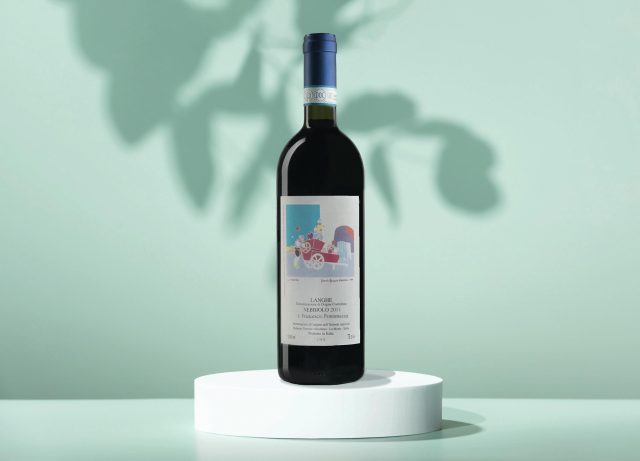iDealwine update: a living legend of Barolo
By db staff writerIn 1986, Roberto Voerzio decided to go it alone on a two-hectare plot of the family vineyard. He has since become one of the living legends of Barolo.

Based in the picturesque hilltop village of La Morra, deep in the heart of the Langhe, Roberto Voerzio has been crafting top-drawer expressions of Barolo for close to three decades.
A perfectionist approach to viticulture, unrelenting quality of production, and a penchant for sustainable farming have won Voerzio a worldwide following. With only a small amount of wine produced every year, the secondary market is becoming the best way for collectors to secure a bottle from this fine wine icon.
The Voerzio vineyards are located in some of the finest crus of Barolo: La Serra, Brunate, Cerequio, Sarmassa, Rocche del’Annunziata, and Fossati, with other vineyards of Dolcetto, Barbera, and Nebbiolo all in the commune of La Morra.
Roberto Voerzio now farms 20 hectares, with the help of his son, Davide, all organically. No herbicides are used, and cow manure is added to fertilise the soils.
Roberto’s vision is to make the purest expression of Nebbiolo as possible. To this end, Voerzio’s viticulture is characterised by high-density planting and meticulous, almost obsessive, vineyard management that results in the region’s lowest yields. In most of Voerzio’s vineyards, you’ll find between 8,000 and 10,000 vines planted per hectare, more than double the regional average.
Nebbiolo in the Langhe is usually cropped at 4kg per plant; Voerzio’s vines yield a maximum of 500g of fruit per vine for the crus, and 1kg for the Dolcetto and Barbera.
Voerzio employs a combination of pruning in January, green harvesting – in mid-July and mid-August to reduce the bunches per plant from an average of 12 to just five – and leaf thinning to drastically reduce yields and grow ripe fruit with concentrated flavours and balanced acidity.
One week before harvest, only grapes of the best quality are selected, and anything else is pruned; with such strict sorting sur pied, triage tables are not needed during harvest at the estate. If Voerzio is not satisfied with the quality of a particular year, he prefers to skip that vintage than to release a second-rate wine.
In the chai, Voerzio is considered a ‘modernist’, although this is perhaps more evident in the style of the finished wine than the methodology behind it. He opts for short maceration on the skins, usually around 15 days, with gentle pumping over twice per day. Fermentation – with wild yeasts – takes place in stainless steel tanks of varying sizes, allowing each plot to be fermented individually; the temperature is maintained at between 28°C and 30°C. Grapes are 100% destemmed.

After malolactic fermentation, the wines are pressed into a combination of French oak barrique and botti (20% new oak), where they spend two years. The wines then spend six months in stainless steel. They are bottled without fining or filtering, after which they spend a further six months in the bottle before release. Deftly balancing intensity and lightness, bright aromas with concentration and power, Roberto Voerzio’s Barolos are superlative expressions of the notoriously pernickety Nebbiolo grape, and have rightly attracted international acclaim.
Roberto Voerzio releases do not crop up at auction often; many of the results stated here date back around three years. Where there are recent sales, prices have drastically risen since the last time they were sold at auction. Interest centres around Voerzio’s six Barolo singlevineyard bottlings, which come from around La Morra, with the exception of Barolo-based cru Sarmassa. His portfolio is rounded off with two excellent Barbera d’Alba, a Dolcetto d’Alba, a Langhe Merlot, and a Langhe Nebbiolo.
All vintages of Roberto Voerzio Barolo Cerequio sell for over €150 (£132). At a slightly lower altitude, Cerequio has the warmest microclimate of all the La Morra vineyards. The 1999 is estimated at €290 on iDealwine. Another top, south-facing vineyard, Brunate, is sought after; the 2009 last sold in 2018 for €180, while the 2008 achieved €275 in 2022.
Old releases of Barolo La Serra, a cooler site upslope from Brunate, now reach €200, for instance the 2001 and 1999, which last appeared at auction on iDealwine.com in 2021 and 2019 respectively. The 2001 Rocche dell’Annunziata Torriglione cru sold last summer for €200, while the 2007 is estimated at €250. Even recent vintages achieve high hammer prices when they appear at auction: Barolo Fossati 2017 sold in 2021 for €275.
At iDealwine we predict that enophiles will be prepared to part with ever vaster sums when bottles finally become available at auction.
About iDealwine.com
• Founded in 2000, iDealwine is France’s top wine auctioneer and leading online wine auction house worldwide.
• Fine Spirits Auction (FSA) is iDealwine’s dedicated spirits platform, launched in partnership with La Maison du Whisky, a French specialist in high-end spirits since 1956. Seven auctions of the finest whisky, rum, Cognac and more take place annually.
• Based in Paris, and with offices in Bordeaux and Hong Kong, iDealwine sources rare bottles from European cellars, private collections, and direct from producers before meticulously authenticating and shipping to enthusiasts, collectors, and trade customers worldwide.
• iDealwine provides wine and spirits market data and analysis, with over 60,000 price estimates, based on more than three million auction prices.
• If you are keen to sell your spirits then check out iDealwine’s current auctions, sales, and price estimates at: www.FineSpirits.Auction, or for wine at www.idealwine.com

Related news
Will white wine be central to Burgundy's future success in Asia?
